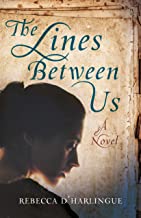The Lines Between Us by Rebecca D'Harlingue
https://booktrib.com/wp-content/uploads/2020/09/The-Lines-Between-Us.jpg
“An ambitious, engaging novel that explores the power of finding personal connection to the past.”
— Kirkus Reviews
“… an incredibly well-researched novel with much to offer in its enthralling plotline …”
— Readers’ Favorite
The Lines Between Us by Rebecca D’Harlingue (She Writes Press) is a riveting and heartfelt historical debut fiction novel.
In 1661 Madrid, Ana’s young niece Juliana suddenly vanishes. Ana searches the girl’s room and finds a diary. After a futile search in Spain, she comes to Juliana’s final entries, and, discovering the horrifying reason for the girl’s flight, abandons her search.
In 1992 Missouri, in her deceased mother’s home, Rachel finds a diary by a woman named Juliana. Rachel recognizes the names Ana and Juliana: her mother uttered them on her deathbed. As she learns the truth about Juliana’s tragic family history, Rachel seeks to understand her connection to the writings — hoping that in finding those answers, she will heal the wounds caused by her mother’s lifelong reticence.
What follows is an excerpt at the time that Rachel discovers Juliana’s second diary.
—∞—
I started with the linen closet, and when I took the first sheet from the shelf, I could almost hear the snap as my mother unfolded it with one deft movement, allowing it to float onto the bed, straight as could be. It was one of those skills that fascinates little kids, things their mothers seem to be able to do so easily and that seem impossible for us ever to achieve. But those household skills come with age and practice, and we unthinkingly perform them before our own wondering children, forgetting how once we had wished for such grace.
As I pulled out more sheets, a package wrapped in brown paper and tied with string fell to the floor. My immediate guess was that Helen had wrapped up some embroidered pillowcases, too old and threadbare to be of any use but with too much sentimental value to throw away. Maybe it was something I had embroidered when I was ten or eleven. I had kept us more than well supplied with fancy pillowcases. Once, I had embroidered pictures of baskets onto some hand towels, peach and black on a white ground. The technique was called huck-toweling, and the project was my fifth and final piece for a Girl Scout badge, each of the five with a different type of embroidery.
I put the package aside and told myself that opening it would be my reward when I’d gone through the rest of the closet. Maybe the package didn’t hold any old projects of mine at all. Maybe there were some old quilts, or crocheted doilies that my grandmother or great-grandmother had made. Helen had hated the doilies, which required starching and painstaking care to achieve the intended look of crisp waves all around the central flat portion, onto which a lamp or vase was placed. She liked old quilts but had never let us use them, for fear that they would become faded or frayed, spoiling the precious yield of so many hours’ work. I knew that she had some quilts, but I hadn’t found any yet. I was already planning how I’d display them to preserve their beauty and to proudly show their art, traditionally so undervalued, the invention of women. One of my friends hated old quilts, because they seemed to her the product of enforced domesticity, the pitiable offering of the only creative outlet open to our foremothers. But I had always believed that works of art endured, and that their creators would not want to see them scorned, even from a wish that they had led a freer life.
Finally, I finished packing up all the items from the linen closet except for the brown parcel, and I allowed myself to open it. It was the sunbonnet quilt that my great-grandmother had made. I recognized it even from the back, from the yellow triangle points sewn around the edge. I carefully laid back the corner to reveal two of the girls appliquéd on the quilt. I knew from memory that each one had a sunbonnet and dress in a different fabric, but no hair, eye, or skin color depicted. As a child, I had wondered what each girl would look like were her sunbonnet pushed back to unveil her true identity.
But there was a bulk and weight to the package that couldn’t be accounted for by the quilt alone. I continued to unfold it and found another package nestled inside. Taped to the outside I saw, in a cursive that was unmistakably my mother’s, a note: “To be opened only by my granddaughter, in the requisite faith and urgent hope that she will one day exist and embrace what I here entrust to her. Read this book and papers in the order in which I have placed them here, so that you will learn your history as you were meant to do, and to pass it on as others have done before you.”





